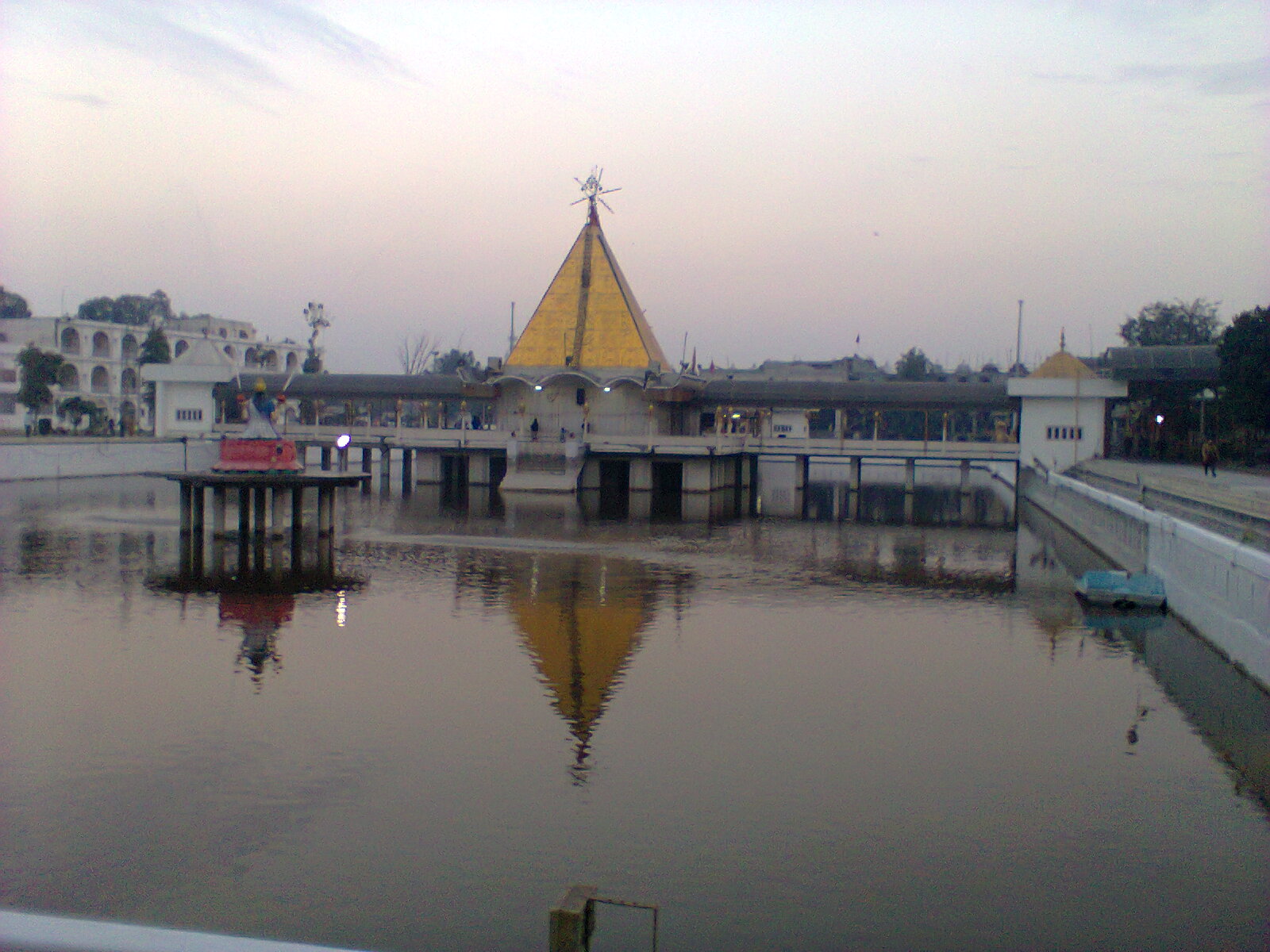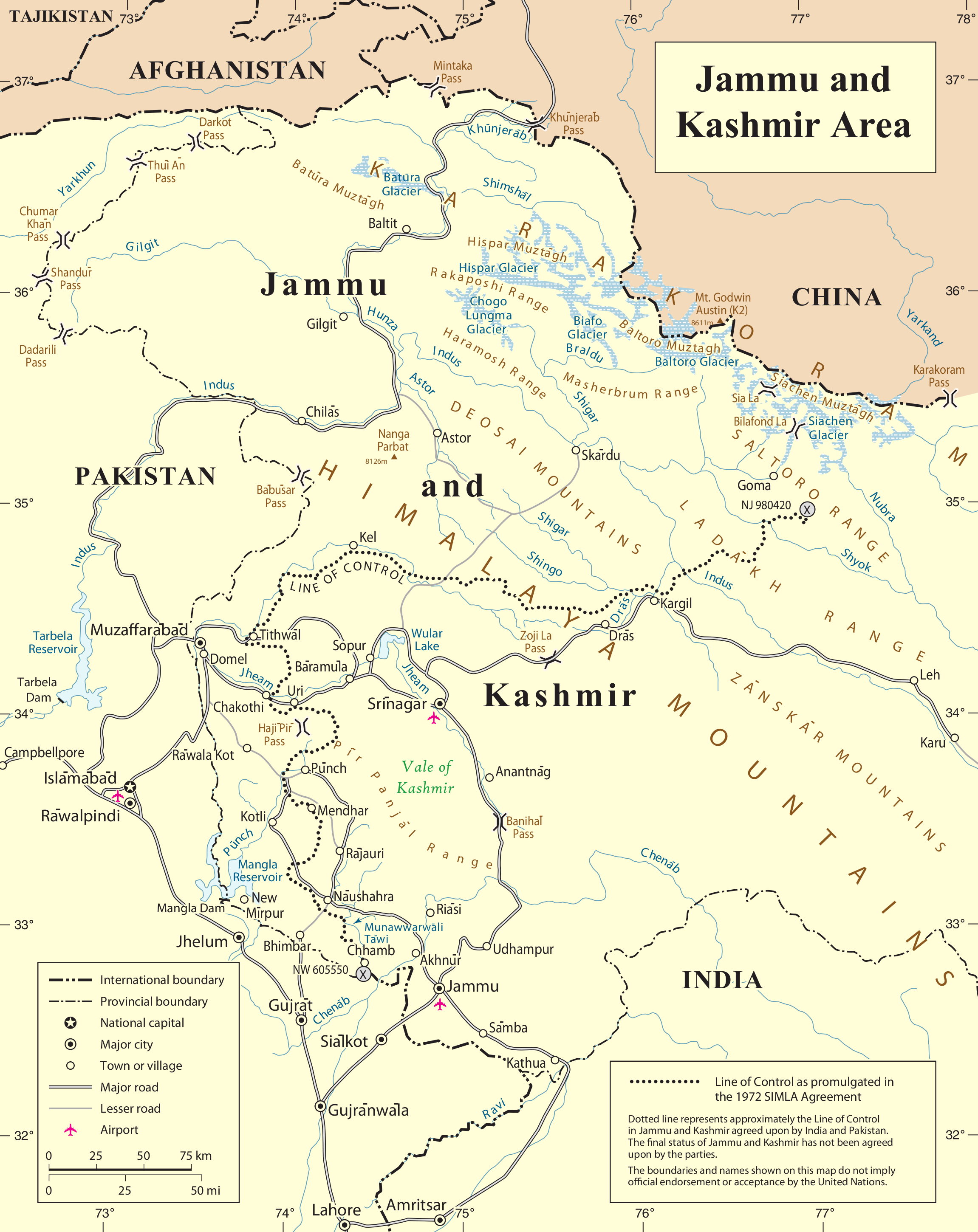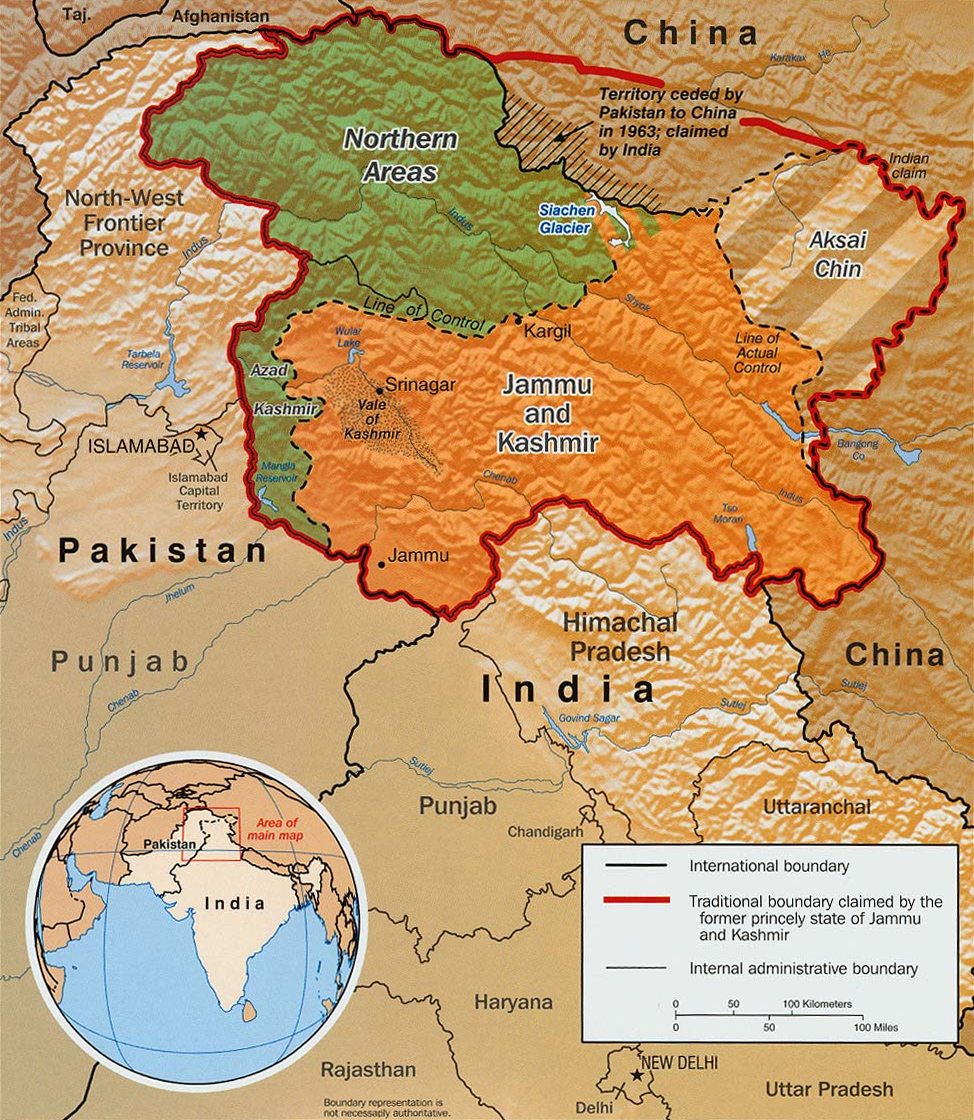|
Colonel Narendra Kumar
Colonel (India), Colonel Narendra Kumar, Param Vishisht Seva Medal, PVSM, Kirti Chakra, KC, Ati Vishisht Seva Medal, AVSM, Fellow of the Royal Geographical Society, FRGS (8 December 1933 – 31 December 2020) was an Indian soldier and mountaineer. He is known for his expeditions across various mountain ranges such as the Himalayas and Karakorams, and respective subranges such as the Pir Panjal Range, Pir Panjals and Saltoro Mountains. His reconnaissance efforts on the Siachen Glacier, Siachen glacier were key to the Indian Army's reclamation of the forward posts of the glacier in Operation Meghdoot in 1984. He was the deputy leader of the first successful Indian Everest Expedition 1965, Indian Mount Everest expedition in 1965. He was a recipient of multiple military and civilian honours including the Param Vishisht Seva Medal, Kirti Chakra, and the Padma Shri. Early life Kumar was born in Rawalpindi, Presidencies and provinces of British India, British India on 8 December 1933, ... [...More Info...] [...Related Items...] OR: [Wikipedia] [Google] [Baidu] |
Colonel (India)
Colonel is a rank in the Indian Army. Like other armies, this rank is higher than lieutenant colonel and lower than a brigadier. It is equivalent to captain in the Indian Navy and group captain in the Indian Air Force. The Indian Army has followed the British Army rank system since India's independence from the British Empire in 1947. However, the St Edward's Crown in the rank insignia was replaced with the National Emblem of India, symbolising the sovereignty of the Government of India. Appointments Colonels in the Indian Army command battalion-sized units (infantry battalions, artillery regiments, armoured regiments). Until the 1980s, battalions (and equivalents) were commanded by a lieutenant colonel. Colonels also serve as staff officers in divisions like Colonel General Staff (Col GS) and Colonel Administration (Col Adm). At Army headquarters, colonels hold the appointments of directors of directorates and branches. Insignia The badges of rank have two five-pointed stars and ... [...More Info...] [...Related Items...] OR: [Wikipedia] [Google] [Baidu] |
Padma Shri
Padma Shri (IAST: ''padma śrī''), also spelled Padma Shree, is the fourth-highest Indian honours system, civilian award of the Republic of India, after the Bharat Ratna, the Padma Vibhushan and the Padma Bhushan. Instituted on 2 January 1954, the award is conferred in recognition of "distinguished contribution in various spheres of activity including the arts, education, industry, literature, science, acting, medicine, social service and public affairs". It is awarded by the Government of India every year on Republic Day (India), India's Republic Day. History Padma Awards were instituted in 1954 to be awarded to citizens of India in recognition of their distinguished contribution in various spheres of activity including the arts, education, Private industry, industry, literature, science, acting, medicine, social service and Public affairs (broadcasting), public affairs. It has also been awarded to some distinguished individuals who were not citizens of India but did contri ... [...More Info...] [...Related Items...] OR: [Wikipedia] [Google] [Baidu] |
Partition Of India
The Partition of British India in 1947 was the Partition (politics), change of political borders and the division of other assets that accompanied the dissolution of the British Raj in South Asia and the creation of two independent dominions: Dominion of India, India and Dominion of Pakistan, Pakistan. The Dominion of India is today the India, Republic of India, and the Dominion of Pakistan—which at the time comprised two regions lying on either side of India—is now the Pakistan, Islamic Republic of Pakistan and the Bangladesh, People's Republic of Bangladesh. The partition was outlined in the Indian Independence Act 1947. The change of political borders notably included the division of two provinces of British India, Bengal Presidency, Bengal and Punjab Province (British India), Punjab. The majority Muslim districts in these provinces were awarded to Pakistan and the majority non-Muslim to India. The other assets that were divided included the British Indian Army, ... [...More Info...] [...Related Items...] OR: [Wikipedia] [Google] [Baidu] |
Paris
Paris () is the capital and most populous city of France, with an estimated population of 2,165,423 residents in 2019 in an area of more than 105 km² (41 sq mi), making it the 30th most densely populated city in the world in 2020. Since the 17th century, Paris has been one of the world's major centres of finance, diplomacy, commerce, fashion, gastronomy, and science. For its leading role in the arts and sciences, as well as its very early system of street lighting, in the 19th century it became known as "the City of Light". Like London, prior to the Second World War, it was also sometimes called the capital of the world. The City of Paris is the centre of the Île-de-France region, or Paris Region, with an estimated population of 12,262,544 in 2019, or about 19% of the population of France, making the region France's primate city. The Paris Region had a GDP of €739 billion ($743 billion) in 2019, which is the highest in Europe. According to the Economist Intelli ... [...More Info...] [...Related Items...] OR: [Wikipedia] [Google] [Baidu] |
World Scout Jamboree
The World Scout Jamboree is a Scouting jamboree of the World Organization of the Scout Movement, typically attended by several tens of thousands of Scouts from around the world, aged 14 to 17. The first World Scout Jamboree was organized by The Boy Scout Association in London. With exceptions for the World War years and the Iranian Revolution, it has been organized approximately every four years, and in the more recent years has been organised by the World Organization of the Scout Movement (WOSM), in different locations over the world. At the jamboree, many scouts will swap badges. In lexicography, "Jamboree" is considered an Americanism that traces back to 1860–65 and refers to a joyful, noisy gathering. The term is believed to originate from the words jabber (rapid, indistinct talk) and shivaree (noisy celebration), with "m" from jam (crowd). History While World Scout Jamboree is the expression used by the World Organization of the Scout Movement, other organizations ... [...More Info...] [...Related Items...] OR: [Wikipedia] [Google] [Baidu] |
Punjabi Hindu
Punjabi Hindus are adherents of Hinduism who identify linguistically, culturally, and genealogically as Punjabis. While Punjabi Hindus are mostly found in the Indian state of Punjab today, many have ancestry from the greater Punjab region, an area that was partitioned between India and Pakistan in 1947. History Ancient The Punjabi people first practiced proto-Hinduism, the oldest recorded religion in the Punjab region. The historical Vedic religion constituted the religious ideas and practices in the Punjab during the Vedic period (1500–500 BCE), centered primarily in the worship of Indra. The bulk of the Rigveda was composed in the Punjab region between circa 1500 and 1200 BCE, while later Vedic scriptures were composed more eastwards, between the Yamuna and Ganges rivers. An ancient Indian law book called the Manusmriti, developed by Brahmin Hindu priests, shaped Punjabi religious life from 200 BCE onward. British colonial era Prominent Indian nationalists fr ... [...More Info...] [...Related Items...] OR: [Wikipedia] [Google] [Baidu] |
Indian Everest Expedition 1965
The 1965 Indian Everest Expedition reached the summit of Mount Everest on 20 May 1965. It was the first successful scaling of the mountain by an Indian climbing expedition. After the first conquest of Mount Everest in 1953 by the New Zealander Edmund Hillary and Sherpa Tenzing Norgay, Indian military forces made several attempts to conquer the summit. The first expedition by the Indian Army, which was led by Brigadier Gyan Singh in 1960, failed. Climbers Colonel Narendra Kumar, Sonam Gyatso, and Sherpa Nawang Gombu reached , just from the summit, but had to turn back due to extremely bad weather. The second expedition by the Indian Army, led by Major John Diaz in 1962, also failed. Captain Mohan Singh Kohli, Sonam Gyatso, and Hari Dang got to almost below the summit at , but also had to give up due to bad weather. Mohan Singh Kohli was a member of both these expeditions. Preparation In 1965, the third Indian expedition, which was led by Mohan Singh Kohli and his deputy ... [...More Info...] [...Related Items...] OR: [Wikipedia] [Google] [Baidu] |
Siachen Glacier
The Siachen Glacier is a glacier located in the eastern Karakoram range in the Himalayas at about , just northeast of the point NJ9842 where the Line of Control between India and Pakistan ends. At long, it is the longest glacier in the Karakoram and second-longest in the world's non-polar areas. It falls from an altitude of 5,753 m (18,875 ft) above sea level at its head at Indira Col on the India–China border down to 3,620 m (11,875 ft) at its terminus. The entire Siachen Glacier, with all major passes, has been under the administration of India (currently as part of the union territory of Ladakh, located in the Kashmir region) since 1984. Pakistan maintains a territorial claim over the Siachen Glacier and controls the region west of Saltoro Ridge, lying west of the glacier, with Pakistani posts located 3,000 ft below more than 100 Indian posts on the ridge. The Siachen Glacier lies immediately south of the great drainage divide that separat ... [...More Info...] [...Related Items...] OR: [Wikipedia] [Google] [Baidu] |
Saltoro Mountains
The Saltoro Mountains are a subrange of the Karakoram Range. They are located in the southeast Karakoram on the southwest side of the Siachen Glacier, one of the two longest glaciers outside the polar regions. The name given to this range is shared with the Saltoro Valley which is located to the west of this range, downslope on the Pakistan side of the Saltoro Range which generally follows the Actual Ground Position Line. Saltoro Kangri peak, Saltoro River, and Saltoro Valley are features on this range. The Actual Ground Position Line (AGPL) between Indian and Pakistan held area runs through this range, where the high peaks and passes of the Siachen area are held by Pakistan,the peaks and valleys to the west after successfully taking back control from India in 1999 Kargil war. The Saltoro Mountains are ''Lesser Karakorams'' on the southwestern side of the large Karakoram-glaciers (Siachen, Baltoro, Biafo and Hispar Glacier from east to west) while the main ridge of the Karakor ... [...More Info...] [...Related Items...] OR: [Wikipedia] [Google] [Baidu] |
Pir Panjal Range
The Pir Panjal Range (Kashmiri: ) is a group of mountains in the Lesser Himalayan region, running from east-southeast (ESE) to west-northwest (WNW) across the Indian territories of Himachal Pradesh and Jammu and Kashmir and then Pakistan's Azad Kashmir and Punjab. The average elevation varies from to . The Himalayas show a gradual elevation towards the Dhauladhar and Pir Panjal ranges. Pir Panjal is the largest range of the Lesser Himalayas. Near the bank of the Sutlej River, it dissociates itself from the Himalayas and forms a divide between the Beas and Ravi rivers on one side and the Chenab on the other. The renowned Galyat mountains are also located in this range. Etymology The Pir Panjal range is named after the Pir Panjal Pass, whose original name as recorded by Srivara, is ''Panchaladeva'' (IAST: ''Pāñcāladeva'', meaning the deity of ''Panchala''). Panchala is a country mentioned in the Mahabharata in the northwest Uttar Pradesh. However, there are also tradition ... [...More Info...] [...Related Items...] OR: [Wikipedia] [Google] [Baidu] |
Karakoram
The Karakoram is a mountain range in Kashmir region spanning the borders of Pakistan, China, and India, with the northwest extremity of the range extending to Afghanistan and Tajikistan. Most of the Karakoram mountain range falls under the jurisdiction of Gilgit-Baltistan, which is controlled by Pakistan. Its highest peak (and List of highest mountains on Earth#List of world's highest peaks, world's second-highest), K2, is located in Gilgit-Baltistan. It begins in the Wakhan Corridor (Afghanistan) in the west, encompasses the majority of Gilgit-Baltistan, and extends into Ladakh (controlled by India) and Aksai Chin (controlled by China). It is the Greater Ranges, second-highest mountain range in the world and part of the complex of ranges including the Pamir Mountains, the Hindu Kush and the Himalayas, Himalayan Mountains. The Karakoram has eighteen summits over in height, with four exceeding : K2, the second-highest peak in the world at , Gasherbrum I, Broad Peak and Gashe ... [...More Info...] [...Related Items...] OR: [Wikipedia] [Google] [Baidu] |
Himalayas
The Himalayas, or Himalaya (; ; ), is a mountain range in Asia, separating the plains of the Indian subcontinent from the Tibetan Plateau. The range has some of the planet's highest peaks, including the very highest, Mount Everest. Over 100 peaks exceeding in elevation lie in the Himalayas. By contrast, the highest peak outside Asia (Aconcagua, in the Andes) is tall. The Himalayas abut or cross five countries: Bhutan, India, Nepal, China, and Pakistan. The sovereignty of the range in the Kashmir region is disputed among India, Pakistan, and China. The Himalayan range is bordered on the northwest by the Karakoram and Hindu Kush ranges, on the north by the Tibetan Plateau, and on the south by the Indo-Gangetic Plain. Some of the world's major rivers, the Indus, the Ganges, and the Tsangpo–Brahmaputra, rise in the vicinity of the Himalayas, and their combined drainage basin is home to some 600 million people; 53 million people live in the Himalayas. The Himalayas have ... [...More Info...] [...Related Items...] OR: [Wikipedia] [Google] [Baidu] |








